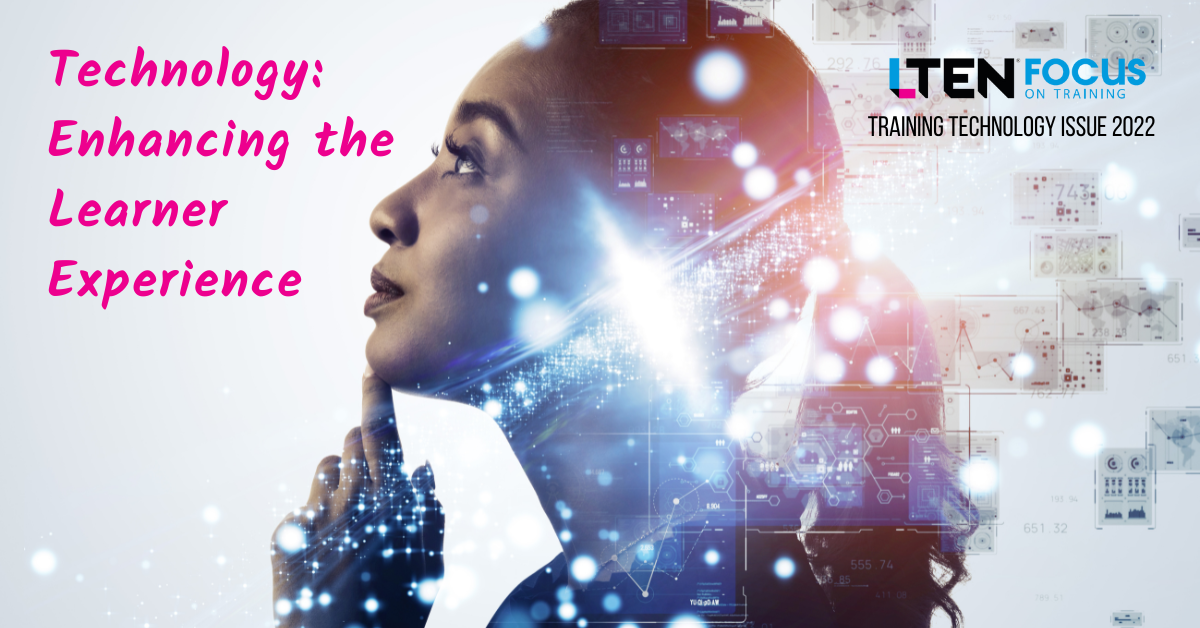
FEATURE STORY – By James Boyd
Technology brings learners the right resources at the right time.
 Your role as a learning leader requires more than simply having a learning management system (LMS) that learners log in to forthe standard prescription of compliance, anti-harassment, code of conduct and conflict of interest courses. You have an incredible responsibility to build an ecosystem of learning that creates organic adoption and drives the right behaviors and skills to take your business to the next level.
Your role as a learning leader requires more than simply having a learning management system (LMS) that learners log in to forthe standard prescription of compliance, anti-harassment, code of conduct and conflict of interest courses. You have an incredible responsibility to build an ecosystem of learning that creates organic adoption and drives the right behaviors and skills to take your business to the next level.
Creating a dynamic space for learning requires you to ask two primary questions about how you are currently serving your employee population:
- How are you meeting your teams where they are throughout their entire workday?
- How many of your employees only use their computer to communicate, complete tasks and deliver on their commitments?
Gone are the days where we deployed a fleet of trainers meeting in large conference rooms to deliver training to be used later. Today we have more ways to get things done, more devices to support our learning experience and more freedom around our choice of work locations.
We owe it to our teams to provide them with the right technology to support learning so that they are better tomorrow than they are today. Leveraging technology to meet all employees where they need it means having diverse resources in your learning ecosystem.
Motivated to Learn
According to LinkedIn Learning’s annual workplace report for 2022, employees want to be engaged in learning experiences. The top three motivations to learn are:
- To stay up to date in their field.
- When the learning is personalized to their interests and career goals.
- When it helps them move into new positions internally or helps them get closer to their career goals.
The great news is that there are some well thought-out learning solutions available for businesses large and small. Recent technologies enable companies to provide employees with the right resources to learn in the flow of their day-to-day, when they need new information.
For instance, there are simulation-based training experiences designed to focus on skill mastery. Also, app-based learning reinforcement and daily growth challenges. And, there are ways to gather learning data outside of your LMS. These all push the boundaries of your learning ecosystem out further.
Get Real
We’ve all struggled to make our training realistic for our teams. Old-school role-plays were mildly effective in creating the atmosphere that allows for practicing the role. Most people didn’t want to take part, cringed as they watched their peers stumble and were no better prepared for their role when training was complete.
The great news is that there are companies breaking that mold and producing learning environments that closely mirror the live environments for employees. These learning solutions use simulation based learning to not only to teach basic skills, but also to drive to skill mastery through coaching and spaced repetition of content.
There also are several forward thinking content providers leading the way by offering immersive learning technologies that give employees real preparation for real life through simulations, practice based learning and coaching experiences.
By combining simulation-based training, real-life practice scenarios and coaching powered by artificial intelligence (AI), you can deliver an experience that upskills, reskills and develops talent directly in response to what the employee needs today, not six months from now.
Repetition
Spaced repetition of content from completed learning experiences helps your learners master new skills. This is highly effective when we seek to harness the power of app based mobile learning and coaching solutions for our teams.
Mobile microlearning is a new way to help deliver reinforcement of learning to your employees without major disruptions to their daily workflow. These app-based solutions use notifications and AI-powered recommendations personalized to the employee’s role and training goals.
Microlearning, Macro Results
Bringing technology forward into your learning ecosystem is an effective way to meet your employees where they are day to day. The leading microlearning solutions use science and gamification and are easy to incorporate into most organizations. Meeting your employees on their mobile devices is a key to creating a more dynamic and engaging learning experience for your teams.
For leaders, micro-coaching platforms elevate the leadership experience by specifically focusing on how your leaders can be more efficient so that your employees are better tomorrow than they are today. Micro-coaching is similar in many aspects to microlearning; the primary difference is that the focus is limited to developing coaching skills only.
Key features of micro-coaching products include incorporating behavioral and personality assessments into specific use cases to drive coaching success. If you use assessments like Hogan, DiSC or Insights Discovery as tools for employee growth, look for solutions that can provide highly specialized insights, tips and tricks for leaders directly to their mobile device.
Micro-coaching applications make it easy to scale and sustain leadership with hyper-personalized nudges, coaching and microlearning.
Stay on Track
With the evolution of how and where we learn, we need to track learning that happens outside of our traditional learning management system. The solution for learning leaders comes in the way of implementing an Experience API or xAPI. This is a learning technology that makes it possible to collect data related to an individual’s online and offline learning experiences.
This technology can gather consistent learning data from multiple technologies to create a more accurate picture of how your employees are engaging your learning ecosystem. This is a secure communication method, and uses a learning record store, which can live within an LMS or be used as a standalone technology resource.
xAPI is a great partner solution when implementing simulation based virtual experiences, microlearning and social learning initiatives in your organization. The best feature is that combining the data from the xAPI with your native LMS reporting engine allows you to be ahead of your employees’ learning needs.
Conclusion
The realities of our hyperconnected, post-pandemic, remote-first workplaces require organizations to be flexible and varied in the learning solutions provided to their teams. Today we have more ways to complete our work each day, more device types to support our learning experience and more freedom around where we locate ourselves to be productive.
We owe it to our teams to provide them with the right technology to support learning so that they are better tomorrow than they are today.
James Boyd, ACC, is manager, learning & development, for Root Insurance. Email James at jboyd0514@gmail.com.








